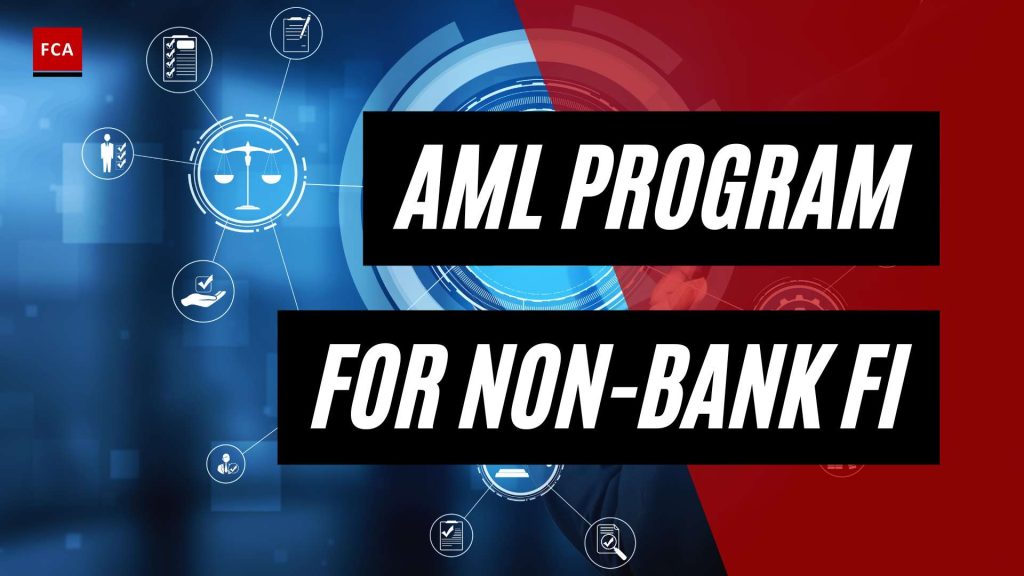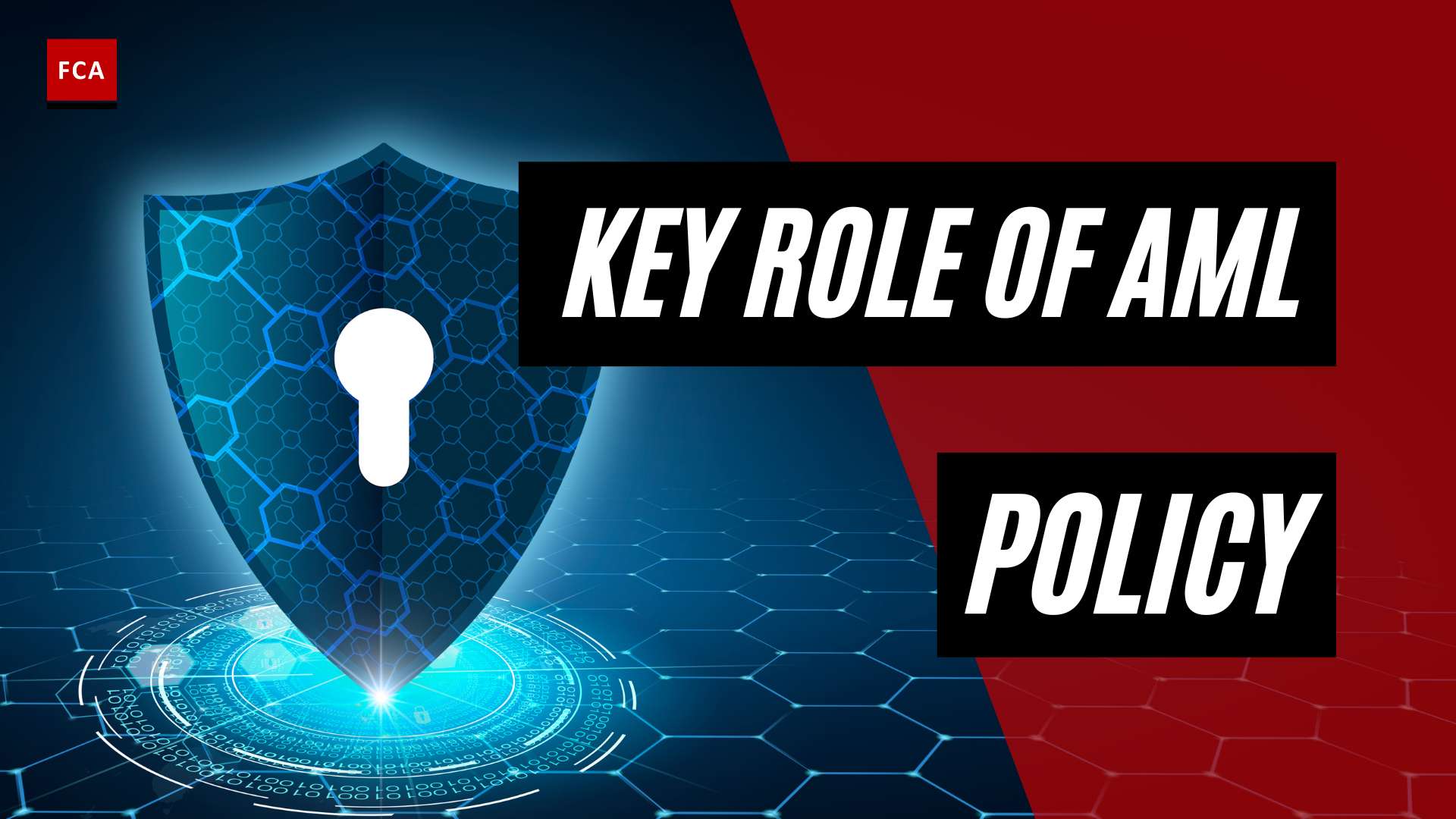Understanding AML Programs for Non-Bank Financial Institutions
To combat the risks of money laundering and other illicit financial activities, non-bank financial institutions must establish effective Anti-Money Laundering (AML) programs. These programs are designed to prevent these institutions from being used as conduits for money laundering activities. Understanding the key aspects and importance of AML programs is crucial for professionals working in compliance, risk management, and anti-money laundering roles within non-bank financial institutions.
What Are AML Programs?
AML programs are comprehensive frameworks developed by financial institutions to detect and prevent money laundering, terrorist financing, and other financial crimes. These programs aim to identify and report suspicious activities that could be related to illicit financial transactions. The primary objective is to ensure compliance with laws, regulations, and international standards, while also protecting the institution’s reputation and integrity (Investopedia).
Importance of AML Programs for Non-Bank Financial Institutions
Non-bank financial institutions, such as money services businesses, check cashers, and cryptocurrency exchanges, are increasingly targeted by criminals for money laundering activities. As a result, it is imperative for these institutions to establish robust AML programs tailored to their specific risks and requirements (Investopedia).
Implementing an effective AML program not only helps non-bank financial institutions comply with regulatory obligations but also contributes to the overall integrity and stability of the financial system. By detecting and reporting suspicious activities, these programs play a crucial role in preventing the use of financial institutions as vehicles for money laundering and other illicit financial activities.
Non-compliance with AML regulations can lead to severe consequences, including regulatory enforcement actions, financial penalties, and damage to the institution’s reputation. Therefore, developing and maintaining a strong AML program is essential for non-bank financial institutions to mitigate the risks associated with money laundering and protect themselves from potential legal and financial repercussions.
In the following sections, we will delve deeper into the regulatory requirements, key components, implementation considerations, risks, and consequences associated with AML programs for non-bank financial institutions. Stay tuned to gain a comprehensive understanding of how to streamline AML programs to ensure compliance and safeguard against financial crimes.
Regulatory Requirements for AML Programs
To effectively combat money laundering and terrorist financing, non-bank financial institutions (NBFIs) are subject to specific regulatory requirements for their Anti-Money Laundering (AML) programs. Two key regulations that NBFIs must adhere to are the Bank Secrecy Act (BSA) and the Financial Crimes Enforcement Network’s (FinCEN) AML Program Rule.
The Bank Secrecy Act (BSA)
The Bank Secrecy Act (BSA) of 1970, as amended, is a U.S. federal law that requires financial institutions to keep records and file reports that are helpful in criminal, tax, and regulatory investigations or proceedings (Investopedia). NBFIs fall under the purview of the BSA and are obligated to develop and implement an effective AML program.
Under the BSA, NBFIs are required to establish and maintain written policies, procedures, and internal controls to prevent money laundering and terrorist financing. These policies and procedures should be tailored to the institution’s risk profile and comply with the BSA’s reporting and recordkeeping requirements. The BSA also mandates NBFIs to appoint a designated AML compliance officer responsible for overseeing the implementation and effectiveness of the AML program.
FinCEN’s AML Program Rule
In addition to the BSA, NBFIs must comply with FinCEN’s AML Program Rule. FinCEN, a bureau of the U.S. Department of the Treasury, is responsible for safeguarding the financial system from illicit activities and ensuring compliance with AML regulations.
FinCEN’s AML Program Rule requires NBFIs to establish and maintain an AML program that includes, at a minimum, the following components:
-
Internal Policies, Procedures, and Controls: NBFIs must develop and implement written policies, procedures, and internal controls designed to detect and prevent money laundering and terrorist financing. These measures should be commensurate with the institution’s risk profile and comply with applicable laws and regulations.
-
Appointing an AML Compliance Officer: NBFIs must designate an AML compliance officer responsible for overseeing the implementation of the AML program, ensuring compliance with regulatory requirements, and serving as the point of contact for AML-related matters.
-
Ongoing Training: NBFIs are required to provide ongoing AML training to employees to ensure they have the necessary knowledge and skills to detect and report suspicious activities. Training should cover topics such as recognizing red flags, customer due diligence, and regulatory changes.
-
Customer Due Diligence (CDD): NBFIs must implement risk-based procedures for conducting customer due diligence, including verifying the identity of customers, understanding the nature of their business, and assessing the risk associated with the customer relationship.
-
Ongoing Monitoring and Reporting: NBFIs should establish processes for monitoring customer transactions and identifying suspicious activity. If suspicious transactions are detected, they must be reported to the appropriate authorities, such as filing suspicious activity reports (SARs) with the Financial Crimes Enforcement Network (FinCEN).
By complying with the regulatory requirements set forth by the BSA and FinCEN’s AML Program Rule, NBFIs can establish robust AML programs that help mitigate the risks associated with money laundering and terrorist financing. It is essential for NBFIs to stay updated with changes in regulations and adapt their AML programs accordingly to ensure continued compliance and effectiveness.
Components of an Effective AML Program
To effectively combat money laundering and ensure compliance with anti-money laundering (AML) regulations, non-bank financial institutions must establish robust AML programs. These programs consist of several key components that work together to prevent illicit financial activities. The three essential components of an effective AML program for non-bank financial institutions are the risk-based approach, customer due diligence (CDD), and ongoing monitoring and reporting.
Risk-Based Approach
A risk-based approach is fundamental to any AML program. It involves assessing and managing the risks associated with specific customers, products, services, and geographic locations. By implementing a risk-based approach, non-bank financial institutions can allocate their resources more effectively and focus their AML efforts on higher-risk areas.
The risk assessment process involves evaluating various factors, such as the nature of the institution’s business, its customer base, and the countries with which it conducts transactions. The evaluation should also consider the potential risks of money laundering and terrorist financing specific to the institution’s industry. Through this risk assessment, non-bank financial institutions can develop risk mitigation strategies tailored to their unique circumstances.
Customer Due Diligence (CDD)
Customer due diligence (CDD) is a critical component of an effective AML program for non-bank financial institutions. It involves verifying the identity of customers, understanding the nature and purpose of customer relationships, and assessing the risk associated with providing services to specific customers.
CDD measures may include obtaining identification documents, conducting background checks, and identifying the beneficial owners of customer accounts. Non-bank financial institutions should establish policies and procedures that outline the CDD requirements, ensuring compliance with AML regulations.
By conducting thorough CDD, non-bank financial institutions can better identify and understand their customers, detect potentially suspicious activities, and mitigate the risk of involvement in money laundering or other illicit financial practices. For more information on customer due diligence, refer to our article on aml procedures for non-bank financial institutions.
Ongoing Monitoring and Reporting
Ongoing monitoring and reporting are crucial elements of an effective AML program. Non-bank financial institutions should establish procedures to monitor customer transactions continuously. This monitoring enables the detection of unusual or suspicious activities that may warrant further investigation.
Through ongoing monitoring, non-bank financial institutions can identify patterns, trends, and anomalies that may indicate potential money laundering or terrorist financing. Suspicious transactions should be promptly reported to the appropriate regulatory authorities in accordance with AML regulations.
Regular reporting obligations include filing suspicious activity reports (SARs) and currency transaction reports (CTRs) when certain thresholds are met. These reports are essential for the detection and prevention of financial crimes. Non-bank financial institutions should ensure that their reporting procedures are in line with regulatory requirements.
For a comprehensive understanding of AML monitoring and reporting, refer to our article on aml monitoring for non-bank financial institutions.
By incorporating a risk-based approach, implementing thorough customer due diligence, and conducting ongoing monitoring and reporting, non-bank financial institutions can establish effective AML programs. These programs play a crucial role in preventing money laundering, terrorist financing, and other illicit financial activities. Compliance with AML regulations is essential to protect both the institution and the broader financial system from the risks associated with financial crime.
Risks Associated with Non-Bank Financial Institutions
Non-bank financial institutions, such as money services businesses, check cashers, and cryptocurrency exchanges, are increasingly becoming targets for money laundering activities. It is crucial for these entities to be aware of the risks they face and implement robust AML programs to mitigate them (Investopedia). Two key risks associated with non-bank financial institutions are money laundering risks and compliance challenges.
Money Laundering Risks
Non-bank financial institutions are vulnerable to money laundering risks due to the nature of their businesses. These institutions often handle large volumes of cash or engage in transactions that may lack transparency. The potential risks include:
- Structuring: Individuals may attempt to deposit or withdraw large sums of money in smaller amounts to avoid triggering reporting thresholds.
- Placement: Illicit funds may be introduced into the financial system through non-bank financial institutions, where they can be disguised as legitimate funds.
- Layering: Complex financial transactions may be conducted to obscure the origin of funds, making it difficult to trace the proceeds of illicit activities.
- Integration: The laundered funds may be reintroduced into the legitimate economy, further disguising their illicit origin.
To effectively address these risks, non-bank financial institutions must establish comprehensive AML controls and implement robust AML procedures to detect and prevent money laundering activities. Regular AML training for employees is essential to ensure awareness and compliance.
Compliance Challenges
Non-bank financial institutions often encounter unique compliance challenges when it comes to implementing effective AML programs. These challenges may include:
- Complex Regulatory Environment: Non-bank financial institutions must navigate a complex web of AML regulations and AML requirements that vary across jurisdictions. Staying up to date with evolving regulations can be a significant challenge.
- Reliance on Third Parties: Non-bank financial institutions may rely on third-party service providers, such as payment processors or technology vendors, to perform certain functions. Ensuring that these entities have adequate AML controls in place can be challenging but critical to maintaining compliance.
- Customer Due Diligence: Conducting thorough customer due diligence can be challenging for non-bank financial institutions, particularly when dealing with customers who present higher risks, such as politically exposed persons (PEPs) or those involved in high-risk jurisdictions.
- Ongoing Monitoring: Non-bank financial institutions must establish robust AML monitoring systems to detect and report suspicious activities. However, the volume and complexity of transactions can pose challenges in effectively monitoring and identifying potential risks.
Despite these challenges, non-bank financial institutions must prioritize compliance with AML regulations to mitigate the risks associated with money laundering. Failure to do so can result in severe consequences, including hefty fines, reputational damage, loss of customer trust, and potential criminal liability for the institution and its executives (Financial Crime Academy). By addressing these risks and implementing effective AML programs, non-bank financial institutions can enhance their ability to detect and prevent money laundering activities, safeguard their reputation, and protect the integrity of the financial system.
Implementing an AML Program for Non-Bank Financial Institutions
When it comes to non-bank financial institutions, implementing a robust Anti-Money Laundering (AML) program is crucial to mitigate the risks associated with money laundering activities. Tailoring the program to the specific business model, allocating resources effectively, and fostering collaboration and oversight are key factors in ensuring the program’s effectiveness and compliance with regulations.
Tailoring the Program to the Business Model
Non-bank financial institutions, such as money services businesses, check cashers, and cryptocurrency exchanges, face unique risks in the context of money laundering. Therefore, it is important to tailor the AML program to the specific business model and the types of financial services being provided. This includes conducting a comprehensive risk assessment to identify the specific risks associated with the institution’s operations, customer base, and geographic footprint. By understanding these risks, the AML program can be designed to address them effectively and efficiently.
Allocation of Resources
Allocating appropriate resources is vital for the successful implementation of an AML program in non-bank financial institutions. Resources should be allocated based on the risk assessment and the level of money laundering risk associated with different types of customers and transactions. Banks that maintain account relationships with non-bank financial institutions should conduct a risk assessment of their non-bank financial institution portfolio and direct resources to accounts that pose a higher money laundering risk (Source). Adequate investment in technology, personnel, and training is essential for effective monitoring, detection, and reporting of suspicious activities.
Collaboration and Oversight
Collaboration and oversight are critical components of a successful AML program in non-bank financial institutions. It is important to foster collaboration between different departments within the institution, such as legal, compliance, operations, and senior management. Regular communication and coordination between these departments ensure that AML policies, procedures, and controls are properly implemented and followed. Additionally, collaboration with relevant external stakeholders, such as regulatory authorities and industry associations, can provide valuable insights and guidance in maintaining compliance with evolving AML regulations.
Oversight of the AML program should be assigned to a designated compliance officer who possesses the necessary knowledge and expertise in AML compliance. This officer should have the authority and resources to enforce the program effectively, conduct regular assessments, and make necessary adjustments based on emerging risks and regulatory changes. Regular monitoring and independent audits of the program are essential to identify any weaknesses or gaps and ensure ongoing compliance.
By tailoring the program to the business model, allocating resources effectively, and fostering collaboration and oversight, non-bank financial institutions can implement a robust AML program. This will help them mitigate the risks associated with money laundering activities, protect their reputation, and comply with regulatory requirements. To learn more about AML compliance for non-bank financial institutions, check out our article on aml compliance for non-bank financial institutions.
Consequences of Non-Compliance with AML Regulations
Ensuring compliance with Anti-Money Laundering (AML) regulations is of utmost importance for non-bank financial institutions. Failure to comply can have severe consequences, both in terms of regulatory enforcement actions and financial and reputational damage.
Regulatory Enforcement Actions
Non-compliance with AML regulations can result in regulatory enforcement actions against non-bank financial institutions. Regulatory authorities closely monitor the compliance efforts of these institutions to safeguard the integrity of the financial system. In the event of non-compliance, regulatory enforcement actions may include:
- Fines and Penalties: Regulatory authorities have the power to impose significant financial penalties on non-bank financial institutions that fail to comply with AML regulations. These fines can be substantial and can have a significant impact on the financial stability of the institution.
- License Revocation: Regulatory authorities may revoke or suspend the license of a non-bank financial institution that consistently fails to meet AML requirements. This action can result in the institution’s inability to operate legally, leading to severe disruptions to its business operations.
- Enhanced Supervision: Non-compliant institutions may be subjected to increased regulatory scrutiny, including enhanced supervision and reporting requirements. This can impose additional burdens on the institution’s resources and restrict its ability to conduct business smoothly.
Financial and Reputational Damage
Non-compliance with AML regulations can also result in significant financial and reputational damage for non-bank financial institutions. The consequences include:
- Loss of Customer Trust: Non-compliance can erode the trust that customers place in the institution. When customers perceive that an institution is not adequately protecting against money laundering and financial crime, they may choose to take their business elsewhere. This loss of customer trust can have a lasting impact on the institution’s reputation and bottom line.
- Reputational Damage: Non-compliance with AML regulations can lead to negative publicity and damage the institution’s reputation in the eyes of its stakeholders, including clients, investors, and business partners. Reputational damage can be difficult to repair and may have far-reaching consequences, affecting the institution’s ability to attract and retain customers and business opportunities.
- Legal Consequences: Non-compliance with AML regulations can expose non-bank financial institutions and their executives to potential criminal liability. Legal actions, including criminal investigations and prosecutions, can have severe implications for both the institution and its key personnel.
To mitigate these consequences, non-bank financial institutions must prioritize AML compliance and implement robust AML programs. This includes establishing comprehensive AML controls, policies, procedures, training programs, and monitoring systems to detect and prevent money laundering and financial crime. By doing so, these institutions can protect themselves from the potential fallout of non-compliance and maintain their integrity in the financial industry.
Evolving Landscape and Future Considerations
In the ever-changing landscape of anti-money laundering (AML), non-bank financial institutions must adapt their AML programs to effectively combat new threats and stay compliant with regulations. As the financial crime landscape evolves, two key considerations for non-bank financial institutions are adapting to changing threats and staying updated with regulations.
Adapting to Changing Threats
Non-bank financial institutions face an array of evolving threats in the realm of money laundering and financial crime. Criminals continuously devise new methods to exploit vulnerabilities within the financial system, making it essential for institutions to adapt their AML programs accordingly.
By regularly reassessing risks and conducting thorough risk assessments, non-bank financial institutions can identify emerging threats and adjust their AML controls and procedures accordingly. This proactive approach enables institutions to stay one step ahead of criminals and minimize exposure to potential risks.
Furthermore, leveraging advanced technologies, such as artificial intelligence and machine learning, can enhance the effectiveness of AML programs by automating the detection of suspicious activities and transactions. These technologies can analyze vast amounts of data, identify patterns, and flag potentially illicit behavior, enabling institutions to respond swiftly and effectively.
Staying Updated with Regulations
Staying abreast of evolving AML regulations is crucial for non-bank financial institutions. Regulatory requirements and expectations can change over time as authorities seek to strengthen the global fight against money laundering and terrorist financing.
Regularly monitoring and interpreting regulatory updates ensures that institutions remain compliant with the latest AML requirements. Non-bank financial institutions should establish processes to track regulatory changes and assess their impact on their AML programs. This may involve reviewing and updating AML policies, procedures, and training materials to reflect new regulations and industry best practices.
Engaging with industry associations, attending conferences, and participating in professional networks can also provide valuable insights into emerging trends and regulatory developments. These channels enable non-bank financial institutions to stay informed, exchange knowledge, and learn from peers who face similar compliance challenges.
To effectively manage the evolving regulatory landscape, non-bank financial institutions should establish a robust compliance function that includes dedicated personnel responsible for tracking and interpreting AML regulations. This ensures that the institution’s AML program remains up to date, mitigating the risk of non-compliance and the potential consequences that may follow.
By adapting to changing threats and staying updated with regulations, non-bank financial institutions can maintain effective AML programs that protect against financial crime, uphold regulatory compliance, and safeguard their reputation within the industry. To learn more about AML compliance for non-bank financial institutions, visit our AML compliance guide.
Implementing an AML Program for Non-Bank Financial Institutions
To ensure compliance with anti-money laundering (AML) regulations and mitigate money laundering and terrorist financing risks, non-bank financial institutions (NBFIs) must establish and maintain an effective AML program. Implementing such a program requires careful consideration of the unique characteristics of the institution and the nature of its business.
Tailoring the Program to the Business Model
An AML program for non-bank financial institutions should be tailored to the specific business model and risk profile of the institution. This involves conducting a thorough assessment of the institution’s products, services, customer base, and geographic reach. By understanding the inherent risks associated with these factors, the institution can design controls and procedures that are proportionate to the level of risk.
Different non-bank financial institutions may have varying risk profiles. For example, a money services business that offers remittance services may face different risks compared to an investment advisor. Tailoring the AML program ensures that the controls and procedures are relevant and effective in addressing the specific risks faced by the institution.
Allocation of Resources
Allocating sufficient resources is critical for the successful implementation of an AML program in non-bank financial institutions. This includes dedicating personnel, technology, and financial resources to support the program’s functions, such as customer due diligence (CDD), ongoing monitoring, and reporting.
The institution should have knowledgeable and trained staff who understand their roles and responsibilities in AML compliance. Regular training and education programs should be provided to keep the staff updated on the latest AML regulations and best practices.
Investing in appropriate technology solutions can also enhance the efficiency and effectiveness of the AML program. Automated systems for customer screening, transaction monitoring, and suspicious activity reporting can help streamline compliance processes and improve the detection of potential money laundering activities.
Collaboration and Oversight
Collaboration and oversight are essential components of an effective AML program for non-bank financial institutions. Different departments within the institution, such as legal, compliance, and operations, should work together to ensure the program’s successful implementation. Regular communication and coordination among these departments can help identify and address potential gaps or weaknesses in the program.
A designated compliance officer or team should have the responsibility of overseeing the AML program. This includes monitoring the program’s effectiveness, conducting periodic reviews, and making necessary enhancements based on changes in regulations or emerging money laundering risks.
Regular internal and external audits should be conducted to assess the adequacy and effectiveness of the AML program. These audits help identify areas for improvement and ensure ongoing compliance with AML regulations.
By tailoring the AML program to the business model, allocating sufficient resources, and fostering collaboration and oversight, non-bank financial institutions can establish robust AML programs that meet regulatory requirements and mitigate money laundering risks. Adhering to these best practices is crucial to safeguarding the institution’s reputation, avoiding regulatory enforcement actions, and protecting against financial and reputational damage. To learn more about AML programs and related topics, visit our other articles on aml compliance for non-bank financial institutions, aml regulations for non-bank financial institutions, aml requirements for non-bank financial institutions, aml controls for non-bank financial institutions, aml policies for non-bank financial institutions, aml procedures for non-bank financial institutions, aml training for non-bank financial institutions, aml monitoring for non-bank financial institutions, and aml reporting for non-bank financial institutions.








